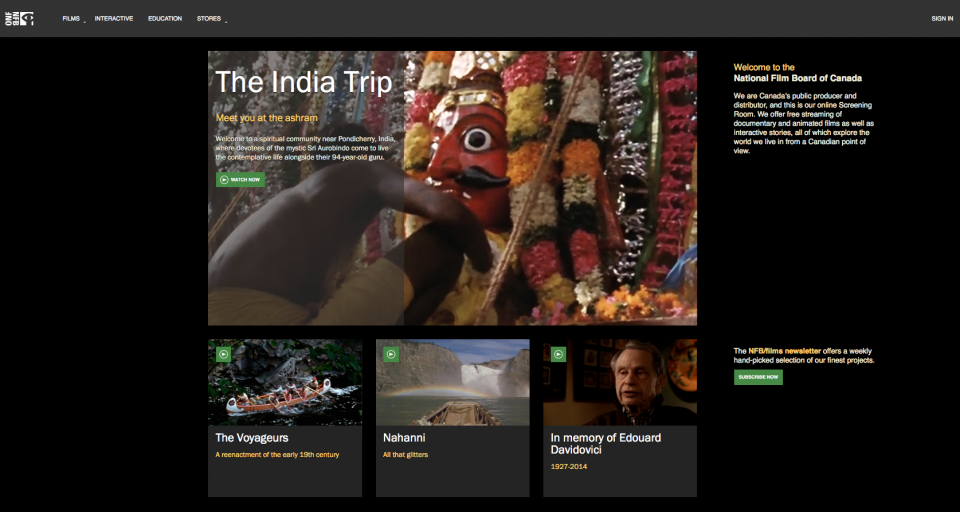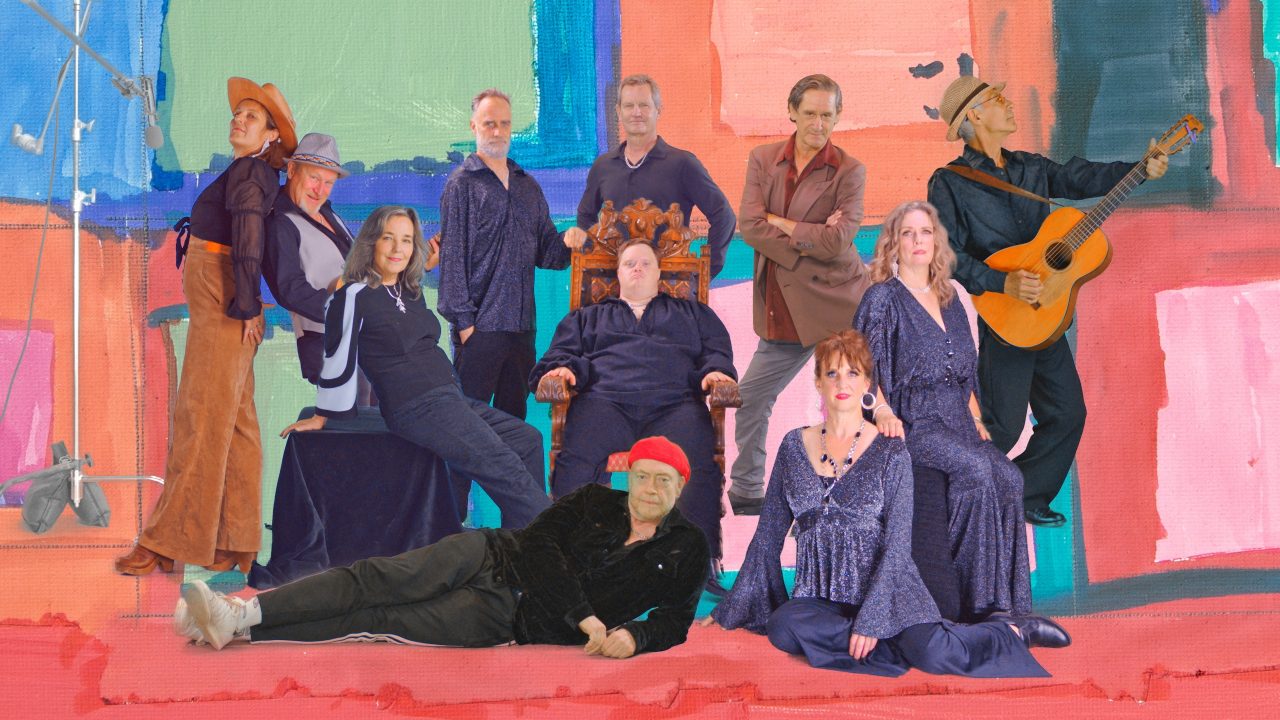
New trends in marketing and distribution; or, how to get eyeballs on your films
New trends in marketing and distribution; or, how to get eyeballs on your films
Well, it took place almost 2 months ago, but the 2014 TIFF Doc Conference is the gift that keeps on giving. We’ve already published three informative posts about what was discussed and shared at the conference by creators, critics, curators, and other industry professionals. Let’s now turn our eye to new strategies in marketing and distribution.
What gets a film seen? What creates buzz? How are audiences watching docs?
“Fervour, excitement, creativity.”
Those are three things Lisa Nishimura, Netflix Vice President of Original Documentary Programming, expects from her marketing and PR departments. If you are working in distribution and marketing in the film and media industries, ask yourself what your staff’s levels of fervour, excitement, and creativity are. In many ways, improving these is the starting point for generating equal amounts of fervour and excitement in the audiences you want to market to.
Saturating screens, theatrical and otherwise
Theatrical releases are just the beginning of film and video viewing these days, and they’re slowly shrinking in number and size in favour of online viewing. “Online programming should be available everywhere where people are consuming video,” said Jed Weintrob, Vice President of Production at Condé Nast Entertainment. Like, for example, NFB.ca!
Still, theatrical releases are an important part of a film’s strategy, especially at festivals. But, as Marc Schiller, CEO of Bond Strategy and Influence (a creative digital consulting agency) pointed out, making a theatrical screening or release successful requires money. “You need the ‘right’ theatres and curators to believe in your film, [and for that] you need budget. You cannot open a movie in New York without the costs of New York discourse, marketing, and media.”
“Look at what’s right for your film,” advises Schiller. “Try to shift the thinking of the success of theatrical; festivals are, in a way, theatrical. They’re a great way to connect with audiences. There are different kinds of theatricals; what’s the right one for a certain film?”
More, more, more! Audiences are thirsty for content
Many online content services, like the new direct-to-fan platform VHX, allow creators and producers to upload bonus content that serves to re-engage audiences over longer periods of time after they’ve already watched a particular film.
Marc Schiller described a strategy his company has employed in the past, through which a viewer must submit their email address in order to unlock bonus content that is paired with a film. “This gives us, one, a relationship over email with the customer, and two, the ability to update content dynamically”—if, say, new information has come to light about a documentary subject after the film was completed. This kind of content can be added to a platform to which users subscribe. “In many ways, the consumer becomes a subscriber”, says Schiller, thereby elongating and deepening that relationship. It’s no longer a question of someone seeing a film and walking away from the theatre; in the digital marketplace, viewers can remain engaged long after watching a particular film.
Here at the NFB, we try to keep our audiences engaged and entertained through our weekly newsletter, which is packed full of info on the thousands of films we have up online for free. Are you subscribed? If not, head over here and sign up!
This strategy also plays into a maxim Schiller likes to use: “Own the customer, not the sale.” He elaborates: “There is a cost of acquisition in [getting] a new customer. I can sell you a film, but it’s hard to say, ‘you bought X, so you’ll love Y’. That will really piss somebody off over time, because they didn’t sign up for that. That’s why it’s great for customers to go deeper with one film; you’re building the asset of that one film. I don’t need a million people to love a project; I need those few people who want to go deeper with the content they see.”
Here’s an example of bonus content we’ve produced: to partner with the feature documentary My Prairie Home, we created an online photo book that showcases some behind-the-scenes set photos from the shooting of the film. Fans loved it! Check out the film’s trailer below, and then explore the photo book here.
My Prairie Home, Chelsea McMullan, provided by the National Film Board of Canada
Expanding the boundaries of documentary
“There are a lot of different ways of looking at non-fiction; we are dealing with audiences that are more educated about what non-fiction can be.” So said Basil Tsiokos, festival curator and programmer for Sundance, DOCNYC, and Nantucket, among other festivals.
Web-based storytelling has evolved into a variety of types of interactive documentaries, many of which can be found on the NFB’s interactive site. Projects like Circa 1948 (which takes viewsers into mid-century Vancouver) and The Devil’s Toy Redux (which updates one of the first skateboarding films of all time into a contemporary meditation on urban landscape and skate culture) are racking up accolades all over the place.
It seems audiences are ready to experience new kinds of non-linear, non-theatrical storytelling, right from the convenience of their mobile devices. If you can give ’em a voice and a way to interact with the content—whether through discussion forums, live chats, playable documentary-games, or even in the kind of bonus content that Marc Schiller talks about—you’ve got an active and engaged viewser on your hands!
Audience engagement in a digital age
It’s not enough to simply put the content out there; you have to make sure people will hear about it, stumble upon it, and watch it, especially online. “The desire to share content is really at the heart of everything we do,” said Jed Weintrob. He also underlined the importance of collaborating with “digital influencers” online (ie. bloggers, and especially those with a strong social media presence). At the end of the day, those are people who help share content and continue a conversation.
Critic Geoff Pevere also highlighted the weighty role of social media… even at his own expense! “I’m not entirely sure we [critics] matter that much! The technology of film distribution and criticism has changed beyond all recognition with the rapid acceleration of social media. You find out a lot of filmmakers—say, Kevin Smith—will tap directly into their direct core audience for critical reception.” It seems the role of the mainstream critic has changed in a world where every viewer and every filmmaker can blog their hearts out. Twitter reviews have even been known to kill a movie before it has even finished screening for the first time—negative reactions are coming out online during the film’s premiere!
Word-of-mouth reviews (especially online) and so-called “cult” popularity are certainly a dominant new way of getting films seen in today’s digital marketplace. Here’s an example of exactly this kind of cult popularity: in 1996, Quentin Tarantino said the NFB’s wacky Project Grizzly was one of his favourites of the year. Fans flocked to the film simply on the premise that it was a weird and wonderful piece of camp that intrigued Tarantino! Mainstream criticism wasn’t necessarily part of the equation.
Project Grizzly , Peter Lynch, provided by the National Film Board of Canada
Hot Docs Survey
Did you know that the good folks at Hot Docs conducted an extensive market research study on documentary viewing habits, which included a detailed national survey that received over 3,300 responses? The results have been published online, and you can check it out here. But here are a few points that I found most interesting
- 71% of survey respondents were women; could this be grounds for another study on gender and interest in documentary?
- There’s a high level of interest in theatrical viewing of docs.
- Audiences feel strongly that Canadian docs are important. They find it difficult to find them, but are willing to pay for them—if they could find them.
- Survey respondents saw docs as “key source of information and resource of lifelong learning.”
- Discoverability is key: reviews and word of mouth matter. Audiences are discerning, smart, and want trusted curation and advice.
- 90% of respondents wanted to discuss the films they saw with friends, family, and colleagues. How? Mostly by sharing links on social media.
- Distributors and marketers should spend money, spend time, and build a strategy when marketing docs. Make docs available on many different platforms at many different times. Curation and ease of use are paramount.
- Audiences are calling for an integrated, strategic release. Marketers and distributors should definitely put a lot of thought into that.
Get that film out there!
That wraps up our summary of the issues in marketing and distribution that were discussed at the TIFF 2014 Doc Conference. We hope you found this info useful! It’s all hands on deck when it comes to social media buzz, emerging online viewing platforms, and audiences’ hunger for content. Let’s get out there and make a doc!
Header image credit: @Kmeron for LeWeb11 Conference at Les Docks, Paris, 2011. Image has been cropped; view original here.




